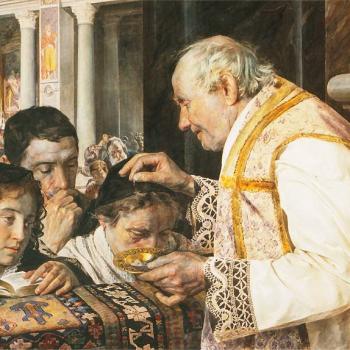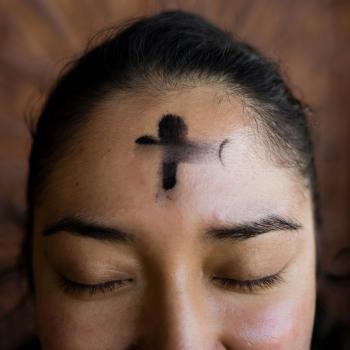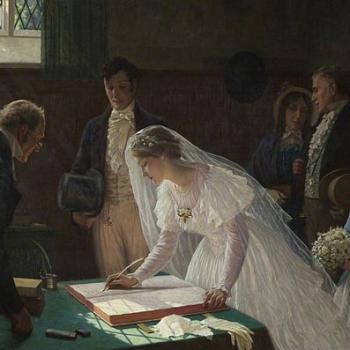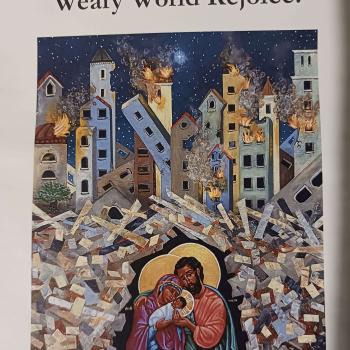This post is dedicated to my son Francisco, who is going to summer school to take Latin. His goal is to choose and translate a motto into Latin, so that it will sound impressive. Unfortunately, the leading candidate for his motto is “Go to Hell, and take your cheap suit with you.”
Sandro Magister is providing a forum for a raging debate in Italy over the interpretation of Vatican II. Recently, a “liberal” from the Bologna school, Enrico Morini, has weighed in with an article entitled “Tradition Is Also Made of “Ruptures.” The article provides an interesting argument in support of the notion that Vatican II marks a rupture in Church teaching. More specifically, he claims that Vatican II turned its back on many developments from the second millenium in order to return to first millenium belief and practice:
This recovery, on the part of the Catholic Church, of the tradition of the first millennium implicitly involved a de facto rupture – I apologize for the excessive schematization – with the Catholic tradition of the second millennium. It is not true, in my view, that there are no ruptures in the tradition of the Church. There was one interruption, precisely at the passage from the first to the second millennium, with the transition imparted by the “Lorraine-Alsace” reformers (like Pope Leo IX, as also two of the three legates in Constantinople in the aforementioned 1054, Cardinal Umberto and Stefano di Lorena, a future pope) and by the “Gregorian” reform, and then by an eminently philosophical approach to theological truths and by the overwhelming interest in canon law (already lamented by Dante Alighieri), at the expense of Scripture and the Fathers, at the height of the Middle Ages.
His argument has interesting parallels with the ideas of Martin Rhonheimer, who has argued that apparent “discontinuities” in Church teaching are to be explained by the fact that the Church is hewing to a deeper tradition. In previous posts I have made my feelings clear. Here I want to focus on an interesting argument that Morini makes, one which (he claims) will anger “progressives”. He argues that the return of the Tridentine mass is a good thing, and is part and parcel of the “rupture” of Vatican II:
[T]he motu proprio “Summorum Pontificum” – which, as is known, authorizes the practice of the Tridentine missal as an “extraordinary” rite – a document considered by many as involutive with respect to the Council, instead has for me the unquestioned value of reestablishing in the Latin Church the liturgical pluralism proper, once again, to the first millennium. Even if this is a ritual plurality distinguished by the variable of time, and not by that of geographical space, it has the value of introducing into the Catholic Church as well – in a peaceful and painless way – that “old-ritualistic” presence which is a patrimony, although acquired in a violent and traumatic way, of the Orthodox tradition.
I find this an interesting argument, precisely because one of the downsides (in my mind) of the Tridentine reforms was the suppression of liturgical variation: most local rites in the Western Church were abolished, and the few that remained—such as the Ambrosian and Mozarabic rites—were marginalized to the point of irrelevance. Though I have no intellectual or emotional connection to the Latin mass, and I suspect the motives of some of the proponents of it, I think I would be willing to support its reintroduction if it marked the beginning of a new period of liturgical diversity. Not necessarily a return to the endless liturgical experimentation of the period after the Council, but rather, a gleaning from that period and a consolidation of the best innovations into local liturgies.
How local? National liturgies, perhaps even diocesan ones. Considering that the Latin mass will be celebrated in one or at most a few parishes in any diocese, perhaps the argument can be made that liturgies proper to specific parishes or shrines could be acceptable. For example, what about a Marian liturgy proper to Lourdes or Fatima, or a Franciscan liturgy proper to Assisi or any parish staffed by Franciscan friars? Given the interpenetration of Roman rite and Byzantine rite dioceses, we already have particular parishes with distinctive liturgies around us in many parts of the country.
As I understand it, the Council of Trent suppressed local liturgies because of valid concerns about abuses which had crept into the liturgy. But it is worth asking: did the Council throw out the baby with the bath water? Is there any reason that we have to demonstrate our Catholic unity by praying in lock step?












